subaru eyesight disabled check manual
Subaru EyeSight is an advanced driver-assist technology designed to enhance safety and driving comfort. It uses stereo cameras to enable features like adaptive cruise control and pre-collision braking. However, issues such as camera misalignment, windshield damage, or electrical problems can cause the system to disable itself, prompting a “Check Manual” message. This guide explores the reasons behind EyeSight disablement, troubleshooting steps, and solutions to restore functionality.
Overview of Subaru EyeSight Technology
Subaru EyeSight is an advanced driver-assist system that enhances safety and driving comfort through innovative technology. It utilizes a pair of stereo cameras mounted on the windshield to monitor the road and surrounding environment. These cameras work together to detect vehicles, pedestrians, and lane markings, enabling features like adaptive cruise control, lane-keeping assist, and pre-collision braking. The system processes visual data in real-time, allowing it to make precise decisions to assist the driver. EyeSight is designed to reduce the risk of accidents and improve overall driving confidence. Its integration with Subaru’s vehicles has made it a cornerstone of the brand’s commitment to safety and innovation, offering a seamless and intuitive driving experience.
Why EyeSight is Important for Driver Safety
Subaru EyeSight plays a critical role in enhancing driver safety by reducing the risk of accidents and providing adaptive assistance. Its advanced features, such as pre-collision braking and adaptive cruise control, help prevent collisions by detecting vehicles and pedestrians. EyeSight also assists in maintaining lane position, reducing the likelihood of unintended lane departures. By continuously monitoring the road and reacting in real-time, the system acts as an extra layer of protection, especially in high-stress driving situations. This technology not only protects drivers and passengers but also contributes to safer roads overall. Its ability to adapt to various driving conditions makes it an essential tool for modern drivers seeking enhanced safety and peace of mind behind the wheel.
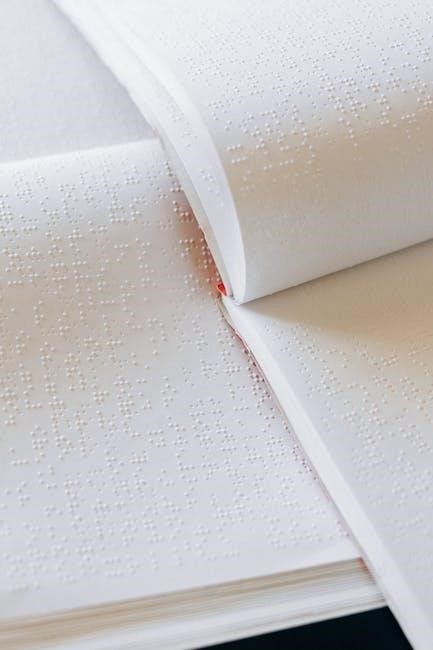
Common Reasons for EyeSight System Disablement
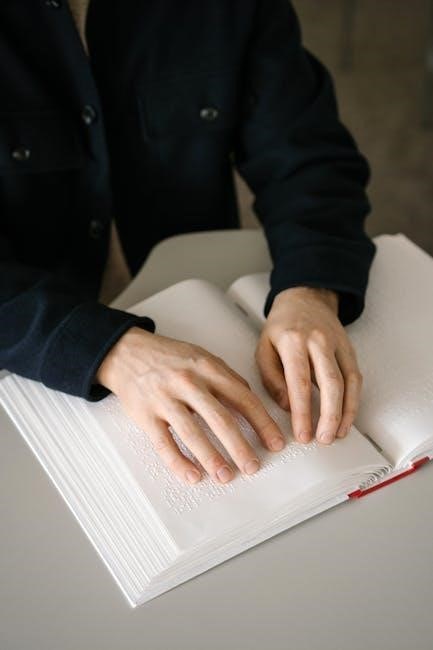
Camera misalignment, windshield damage, environmental factors like weather or dirt, electrical issues, and steering sensor malfunctions are common causes for Subaru EyeSight system disablement.
Camera Misalignment or Damage
Camera misalignment or damage is a primary reason for Subaru EyeSight system disablement. The stereo cameras mounted on the windshield can become misaligned due to improper installation, accidents, or even slight adjustments during repairs. Moisture inside the camera housing or cracks in the lens can also disrupt functionality. If the cameras are damaged or misaligned, the system shuts down to prevent inaccurate readings. This is especially common after windshield replacements, as the cameras must be precisely recalibrated. Subaru recommends using OEM windshields and professional calibration to avoid such issues. Addressing camera problems promptly ensures the EyeSight system operates reliably, providing essential safety features like adaptive cruise control and collision prevention.
Windshield Replacement Issues
Windshield replacements are a common cause of Subaru EyeSight system disablement. After replacing the windshield, the EyeSight cameras must be recalibrated to ensure proper functionality. If the replacement windshield is not OEM or lacks the correct bracket placement, it can cause optical distortions, leading to system malfunctions. Non-OEM windshields may not provide the necessary clarity or alignment for the cameras to function accurately. Even slight misalignments during installation can trigger the “EyeSight Off” or “Check Manual” warnings. To resolve this, Subaru recommends using OEM windshields and having the cameras recalibrated by a certified technician. Proper recalibration ensures the system operates seamlessly, restoring features like adaptive cruise control and lane-keeping assist.
Environmental Factors (Weather, Dirt, etc.)
Environmental factors such as weather conditions and dirt can interfere with the Subaru EyeSight system, leading to disablement. Snow, heavy rain, or fog can obstruct the cameras’ view, while dirt or debris on the windshield can block their ability to detect lanes or vehicles. Moisture inside the camera housing, such as condensation, can also disrupt functionality. In such cases, the system may display an “EyeSight Off” or “Check Manual” message. Cleaning the windshield with an ammonia-free glass cleaner and ensuring the camera area is clear can often resolve the issue. In severe weather, activating the defroster or waiting for conditions to improve may be necessary. Regular maintenance, such as keeping the windshield clean and addressing moisture issues, helps prevent environmental-related system shutdowns.
Electrical System Problems
Electrical system issues can cause the Subaru EyeSight system to disable itself, resulting in a “Check Manual” message. A weak battery, voltage fluctuations, or faulty connections may disrupt the power supply to the EyeSight components. This is particularly common in vehicles with older batteries or after a jump-start. Symptoms may include random system shutdowns, especially during startup or idle. To diagnose, check the battery voltage, ensuring it reads around 12.6V when off and 13.7-14.7V when running. Inspect connections for corrosion or looseness and verify the alternator’s charging performance. Addressing these issues may require replacing the battery or repairing electrical components. After resolving the electrical problems, recalibrating the EyeSight system is often necessary to restore functionality. A test drive can confirm if the system operates normally after repairs.
Steering Sensor Malfunctions
Steering sensor malfunctions can cause the Subaru EyeSight system to disable itself, especially during sharp turns or lane changes. The system relies on data from the steering angle and yaw rate sensors to function properly. If these sensors malfunction or fall out of calibration, EyeSight may shut down, triggering a “Check Manual” message. This issue is more common in certain models, such as the 2017-2019 Forester and 2016-2020 Outback. Symptoms often include consistent deactivation during turns, with error codes like C0045 indicating sensor problems. Resetting the steering angle sensor by turning the wheel fully left and right may temporarily resolve the issue. However, persistent problems require professional recalibration or sensor replacement at a dealership or qualified repair shop to restore EyeSight functionality.

Troubleshooting EyeSight Disablement
Start by checking the camera alignment and cleanliness. Environmental factors like dirt or weather may cause issues. Reset the system or consult the manual for guidance.
Checking for Error Codes
When the EyeSight system disables itself, checking for error codes is a crucial first step. Use a Subaru Select Monitor (SSM) tool to retrieve specific codes like C0072 or B28C7, which indicate camera or system malfunctions. These codes help identify issues such as misaligned cameras, condensation in the housing, or electrical problems. If the codes point to camera-related faults, inspect the housing for damage or misalignment. For steering sensor issues, codes like C0045 may appear, suggesting calibration or replacement needs. Addressing these codes promptly ensures the system functions correctly. Always refer to the manual or consult a professional if codes persist or require advanced troubleshooting.
Inspecting Camera Housing and Alignment
Inspecting the camera housing and alignment is essential when the EyeSight system disables itself. Start by visually examining the camera module at the top of the windshield for any signs of damage, such as cracks or condensation. Ensure the cameras are properly aligned and seated in their brackets. Misalignment, even slight, can trigger system shutdown. Clean the camera lenses and surrounding area with an ammonia-free glass cleaner to remove dirt or debris. If misalignment is suspected, recalibration may be necessary, which requires specialized tools like Subaru’s Select Monitor (SSM). For accurate alignment, it’s recommended to have a professional perform this process, especially after windshield replacements or other repairs that may affect camera positioning.
Resetting the System
Resetting the Subaru EyeSight system can often resolve temporary issues. Start by turning off the engine and all electrical accessories. Wait for 10-15 seconds, then restart the car. This simple reset can sometimes reactivate the system. If environmental factors like a dirty windshield or poor weather caused the disablement, ensure the windshield is clean and free of obstructions. Use an ammonia-free glass cleaner and activate the defroster to clear fog or ice. If the system remains off, check for error codes using Subaru’s Select Monitor (SSM) tool. Address any identified issues, such as misaligned cameras or sensor malfunctions. If resetting doesn’t work, consult a dealership for professional recalibration or repairs. This step is crucial for restoring EyeSight functionality and ensuring safe driving conditions.
Addressing Electrical Issues
Electrical problems can cause the Subaru EyeSight system to disable itself. A weak battery or voltage fluctuations may trigger this issue, especially during startup or idle. Check the battery voltage, which should read around 12.6V when off and 13.7-14.7V when running. Inspect connections for corrosion or looseness and ensure the alternator is charging properly. If persistent glitches occur, a software update (ECU reflash) may be required. Addressing electrical issues often resolves system malfunctions. After fixing, the EyeSight system may need recalibration, which should be performed by a professional. Ensuring stable power supply is crucial for maintaining the functionality of advanced driver-assist features like EyeSight. Regular checks can prevent unexpected system disablements and enhance overall driving safety.

Professional Diagnosis at a Dealership
If the Subaru EyeSight system remains disabled despite troubleshooting, a professional diagnosis at a dealership is recommended. Dealerships utilize specialized tools like the Subaru Select Monitor (SSM) to identify underlying issues such as faulty sensors, misaligned cameras, or software glitches. Technicians can recalibrate the system, replace damaged components, and perform necessary updates. Their expertise ensures accurate repairs, preventing further complications. Additionally, dealerships have access to the latest technical updates and can address model-specific issues effectively. A professional diagnosis guarantees the system operates correctly, restoring safety features and driving confidence. It is especially crucial for complex problems that require precise recalibration or advanced diagnostic equipment available only at authorized service centers.
How to Manually Disable EyeSight
To manually disable Subaru EyeSight, press and hold the EyeSight button on the steering wheel for five seconds. This deactivates all visual and audible warnings, placing the system in standby mode.
Temporary Deactivation via Steering Wheel Button
Temporary deactivation of Subaru EyeSight can be done effortlessly using the steering wheel button. Press and hold the EyeSight button for approximately five seconds until the system enters standby mode. This action disables all visual and audible warnings, allowing drivers to regain full control without the system’s interventions. The process is reversible, as reactivating the system can be achieved by pressing the same button again or restarting the engine. This feature is particularly useful in specific driving conditions where EyeSight’s assistance may not be desired, ensuring a seamless and adaptable driving experience tailored to individual preferences.
Permanently Turning Off EyeSight Features
For drivers who prefer not to use Subaru EyeSight features permanently, the system can be disabled through specific settings. Access the vehicle’s infotainment system and navigate to the Driver Assist section. There, you can toggle off features like adaptive cruise control and lane-keeping assist. While this method deactivates EyeSight functions, it does not remove the system entirely. Permanent deactivation may require a visit to a Subaru dealership, where technicians can adjust the system settings or disconnect certain components. It’s important to note that disabling EyeSight permanently may affect the vehicle’s safety ratings and functionality, so this decision should be made with careful consideration.
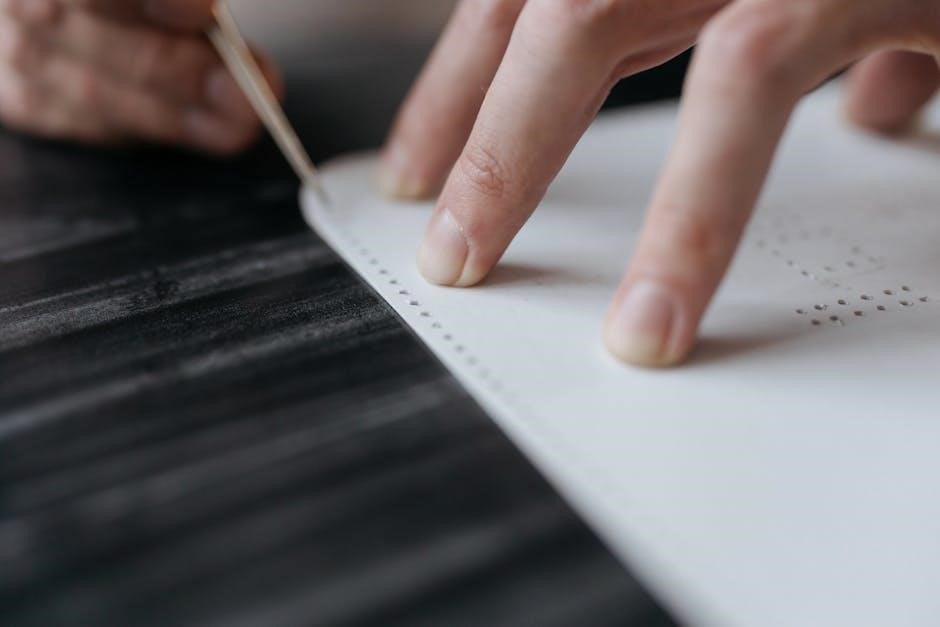
Model-Specific EyeSight Issues
Subaru EyeSight systems vary by model year and generation, with Gen 2 and Gen 3 systems (2014-2021) being more sensitive to camera misalignment or windshield replacements. Newer models (2022 onwards) have improved reliability but can still experience temporary disablements due to software or sensor issues. Manual transmission models, such as the BRZ, have unique EyeSight configurations that require specific calibration. Understanding your vehicle’s generation and transmission type is key to addressing model-specific EyeSight challenges effectively.
Gen 2 and Gen 3 EyeSight Systems (2014-2021)
Subaru’s Gen 2 and Gen 3 EyeSight systems, available from 2014 to 2021, are highly sensitive to camera alignment and environmental factors. These systems often disable themselves due to minor issues like windshield replacements, camera misalignment, or condensation inside the housing. Models such as the Forester and Outback from this period frequently experience shutdowns, displaying “EyeSight Off” or “Check Manual” messages. This sensitivity requires precise recalibration, typically needing Subaru’s diagnostic tools. While newer models have improved reliability, Gen 2 and Gen 3 systems remain more prone to temporary disablements, especially after repairs or extreme weather conditions. Regular maintenance and professional calibration are essential to ensure optimal performance and safety.
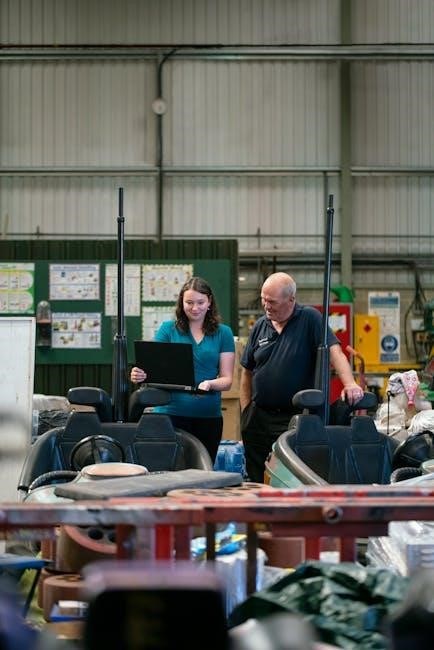
2022 and Newer Models
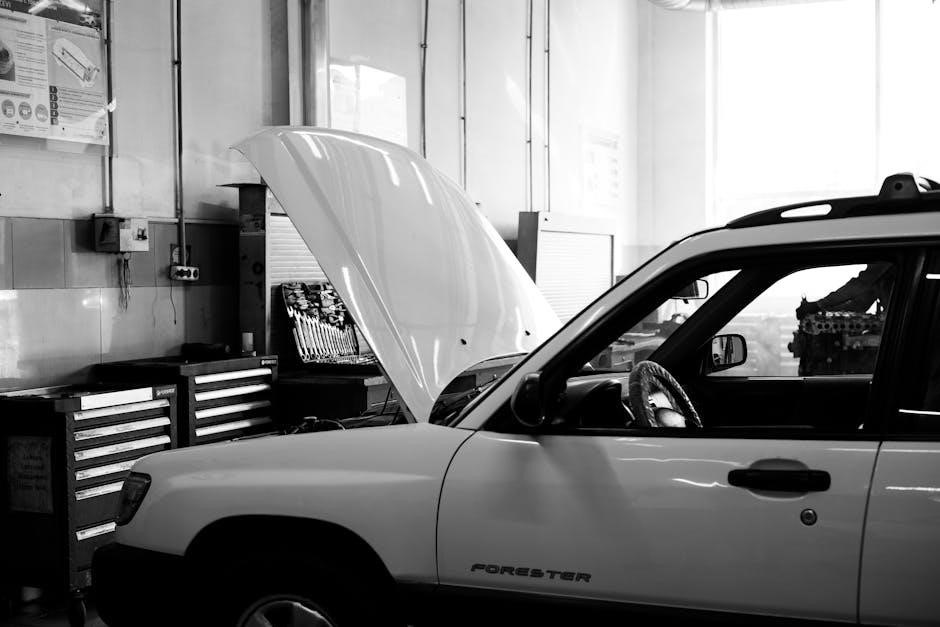
Starting from 2022, Subaru introduced enhanced versions of the EyeSight system, offering improved reliability and functionality. These newer models incorporate upgraded cameras and software, reducing sensitivity to minor issues like slight misalignments or environmental factors. However, occasional disablements still occur, often due to severe weather conditions, heavy dirt buildup on the windshield, or electrical glitches. The “EyeSight Off” or “Check Manual” messages may appear temporarily, but the system typically resumes operation once conditions improve. Subaru has also expanded EyeSight compatibility to manual transmission vehicles, such as the BRZ, ensuring a broader range of drivers can benefit from its safety features. Despite these advancements, regular maintenance, like cleaning the camera area and updating software, remains crucial for optimal performance.
Manual Transmission Compatibility
Subaru has made significant strides in adapting the EyeSight system for manual transmission vehicles, addressing previous limitations. Historically, manual transmissions posed challenges for EyeSight due to the potential for stalling during emergency stops. However, starting with the 2023 BRZ, Subaru successfully integrated EyeSight into manual models, ensuring features like adaptive cruise control and pre-collision braking remain functional. This advancement was achieved through refined software and sensor calibrations, making EyeSight accessible to a broader range of drivers. Despite this progress, occasional issues such as system disablements can still arise, often due to specific driving conditions or mechanical factors. Regular system checks and updates are recommended to maintain optimal performance in manual transmission vehicles equipped with EyeSight. This ensures a seamless and safe driving experience for all users.

Preventive Measures
Regular maintenance is key to preventing EyeSight issues. Ensure windshield clarity, update software, and avoid aftermarket parts. These steps help maintain optimal system performance and reliability over time.
Maintaining Windshield Clarity
Maintaining a clear windshield is crucial for Subaru EyeSight to function properly. Dirt, ice, or fog can obstruct the cameras, leading to system disablement. Regular cleaning with ammonia-free glass cleaner ensures optimal visibility. Additionally, avoiding harsh chemicals and using a microfiber cloth prevents streaks and scratches. In winter, defrosting the windshield thoroughly before driving is essential. Drivers should also check for any debris or moisture inside the camera housing, as this can interfere with the system’s accuracy. By keeping the windshield clean and clear, you help prevent unnecessary EyeSight disablements and ensure reliable performance of its safety features.
Regular System Updates
Regular system updates are essential to ensure Subaru EyeSight operates at peak performance. Software updates often address bugs, improve camera calibration, and enhance sensor integration. Owners should periodically check for updates through Subaru’s official channels or visit a certified dealership. Updating the system can resolve issues like intermittent disablements or error codes. Additionally, updates may improve compatibility with new features or hardware. Failing to update can lead to outdated software causing malfunctions, especially after repairs or modifications. Always use Subaru-approved tools or consult a professional to avoid system corruption. Keeping the EyeSight system up to date ensures reliability and safety on the road.
Avoiding Aftermarket Parts
Using aftermarket parts, particularly for components like windshields or cameras, can interfere with Subaru EyeSight’s functionality. Non-OEM parts may not meet the precise specifications required for proper system operation. For instance, aftermarket windshields can cause optical distortions, leading to camera misalignment and system disablement. Similarly, non-genuine sensors or electrical components might introduce compatibility issues, causing error codes or inconsistent performance. Subaru strongly recommends using OEM parts to maintain the integrity and reliability of the EyeSight system. By adhering to manufacturer guidelines, drivers can ensure their vehicle’s advanced safety features function as intended, providing optimal protection and driving assistance.
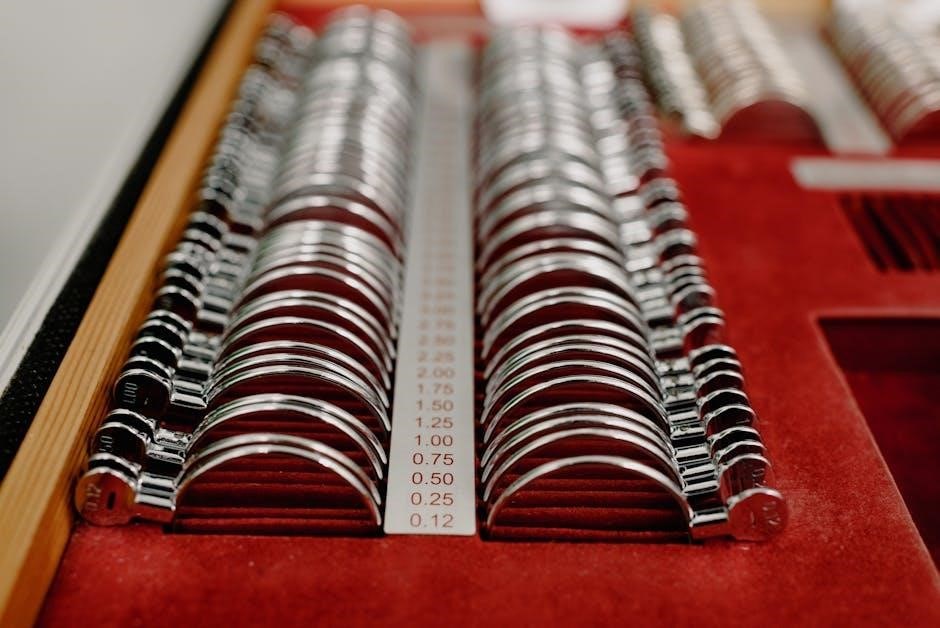
Final Thoughts
Subaru EyeSight significantly enhances driving safety and convenience. Addressing disablement issues promptly ensures optimal performance. Always refer to the manual or consult professionals for complex problems.
Importance of Proper System Maintenance
Proper maintenance is crucial for Subaru EyeSight to function effectively. Regular checks ensure cameras remain aligned and free from obstructions like dirt or moisture. Using genuine Subaru parts, especially for windshields, maintains optical clarity. Updating software and addressing electrical issues promptly prevents unexpected disablements. Simple steps, such as cleaning the windshield and monitoring sensor calibration, can resolve many problems. Neglecting maintenance may lead to system failure, compromising safety features. Consistent upkeep ensures EyeSight operates seamlessly, providing reliable driver assistance and enhancing overall vehicle performance. Prioritizing maintenance not only protects the system but also contributes to a safer and more enjoyable driving experience for Subaru owners.
Enhancing Driving Experience with EyeSight
Subaru EyeSight significantly enhances the driving experience by providing advanced safety and convenience features. Its adaptive cruise control and lane-keeping assist reduce driver fatigue on long journeys, while pre-collision braking adds an extra layer of safety. The system’s ability to anticipate potential hazards and assist in critical moments fosters confidence behind the wheel. By minimizing distractions and offering seamless integration with vehicle controls, EyeSight creates a more enjoyable and stress-free driving environment. Regular updates and proper maintenance ensure optimal performance, allowing drivers to fully benefit from this innovative technology. With EyeSight, Subaru vehicles deliver a safer, smarter, and more refined driving experience.
